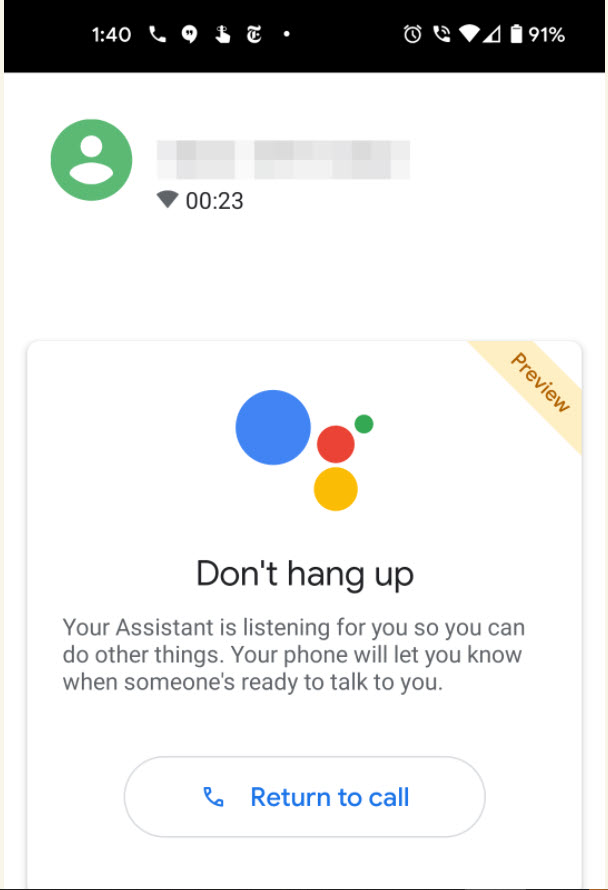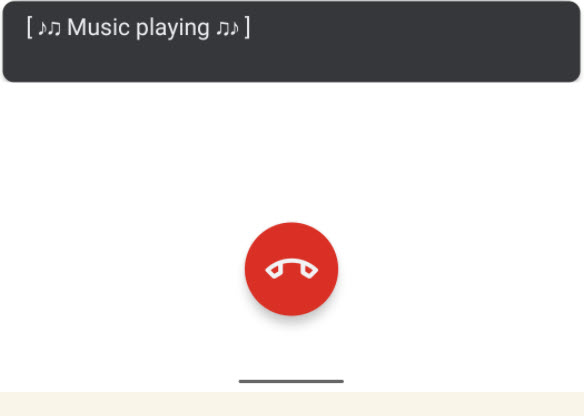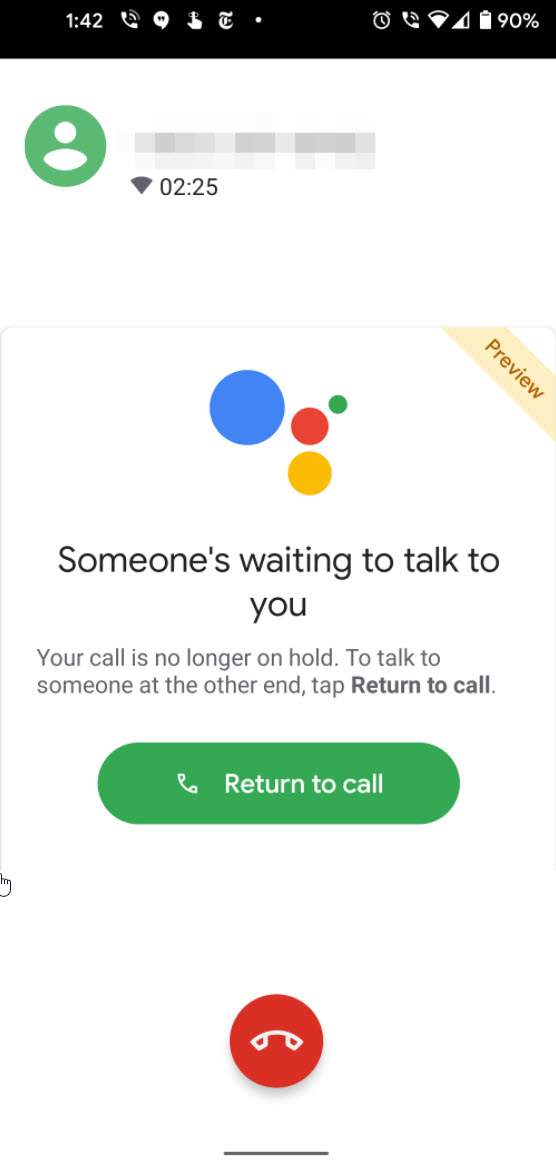 2020 has been a standout year in more ways than one. On personal, national, and global levels, many of us have faced hardships and had to adapt to new realities and life-altering changes. On this day, though, I’d like to put the negative thoughts aside and focus on what has kept us rolling here at Android Police despite it all.
2020 has been a standout year in more ways than one. On personal, national, and global levels, many of us have faced hardships and had to adapt to new realities and life-altering changes. On this day, though, I’d like to put the negative thoughts aside and focus on what has kept us rolling here at Android Police despite it all.
We love gadgets (duh), we love Android, and we love digging, finding, and reporting on the smallest and biggest features that come to those metal and glass sheets that we carry with us everywhere. Some of them are bad, bad, evil changes; others are much more welcome. In the spirit of positivity, I’d like to focus on the latter in this post and share with you our favorite 10 Android features from this year, whether they came with Android 11, a Google app update, or a Pixel Feature Drop.
Hold for me
Google Assistant’s Duplex and Call Screen on Pixels may have paved the way for it, but nothing mentally prepared us for the awesomeness of Hold for me. The feature, which launched with the Pixel 5 and later trickled down the line-up, is a huge time-saver for anyone who has to call a company or support center. Instead of sitting through the interminable wait while listening to horrible hold music, you let Assistant monitor the call and go on your merry way. Once someone at the other end of the line picks up, your phone beeps, vibrates, and tells you the call is ready. None of this would be possible without AI, and while the feature is restricted to Pixels in the USA at this time, it’s a real breakthrough in tech that we hope one day would be ready for all devices across all countries and languages.



RCS for all
RCS, the protocol that takes SMS to the next level thanks to read receipts, typing indicators, and high-quality media sharing, had been a pretty fragmented mess for years because of carriers adopting their own non-interoperable versions. Then Google bought Jibe, adopted the GSMA’s Universal Profile, and took matters into in its own hands by rolling out “Chat Features” (aka RCS) into its Messages app, regardless of carrier. It started in the UK and France in 2019, but spread to dozens of other countries in 2020, until it became available worldwide in November. This month, we also spotted it in action in Samsung’s own messaging app, meaning RCS is now truly universally available on Android, independently of country, carrier, phone brand, and (almost) messaging app.
Although most of us have moved on from SMS to other messaging services, it’s good to know that should all else fail and we need to text someone’s phone number, the basic functionality has been upgraded and now offers several modern features.
Nearby Share
Many Android users used to envy Apple’s AirDrop simplicity because it allows files to be sent from one device to another without having to mess with Bluetooth, NFC, or any confusing settings. The built-in Beam function in Android never took off as a proper cross-device file sharing method, and had to be scraped off and replaced by Nearby Share. The latter is easy to enable through a quick settings toggles and is part of the Share sheet on most phones now. You just tap to share from one Android device, approve the request on another, and just like magic, the files fly over. Nearby Share made its shy debut in June then spread to all Android 6.0+ devices in August. I can’t wait to see it come to Chrome on all platforms, so I finally have a universal and simple way to bounce files between my computers and phones.
More useful power button menu
Android has three easy-to-reach surfaces where it can present you information and let you interact with it: the homescreen, the quick settings and notifications drop-down, and the power button menu. With Android 11, the latter was taken to a new level thanks to the integration of smart home controls on top of payment cards. Just hold the power button and you’ll be able to pay for your purchases or control your lights, plugs, thermostats, TVs, and Chromecasts without having to launch any specific app. It’s fast and handy, and although I’m personally guilty of forgetting this feature exists half of the time, I love that it’s there and I can’t wait until it adds support for more connected devices, like smart blinds and locks.
Gboard’s Emoji Kitchen
By far my most used new feature of 2020 are these combination emojis that Google’s first-party keyboard has added. The feature first showed up in January, but it was pretty basic then: Pick one emoji, get eight different stickers based on it but with a twist on top (heart, monkey, ghost, kissing, sad, etc…). Then things went super-next-level when the option to combine almost any emoji showed up in October. A poop and a newspaper? Shitty news. Crown and a bee? Queen bee. A cat and a cowboy hat? An adorable cat wearing a cowboy hat, d’oh. Hot dot and a coffee mug? A hot dog dunked in coffee. No, seriously. You can even intensify emojis by combining the same one twice, to let your joy, sadness, frustration, depression, love, and other feelings shine through.
The combos feel like they’re infinite and every day I discover fun, ridiculous, useful, genius, or awkward new ones to spruce up my chats. To be frank, these would be at the top of this list if I were being honest, but I had to look serious and put some useful features above them in the countdown.

Gboard’s clipboard suggestions
We’re featuring Gboard twice on this list because the keyboard upped its game with another addition in 2020. Its top row is now contextual and offers smart replies in some messaging apps or suggests to paste the text you just copied. I’m focusing on the latter here because it’s a delightful time-saver. If you’re copying text, you just have to select and copy the needed blurb, then switch to where you want to paste and just place your cursor. The suggestion chip will immediately appear on top of your keyboard. Tap it once and it’s inserted. It’s seamless and removes the need to tap and hold then paste.
This pasting suggestion in Gboard had a predecessor in the form of a Pixel-only feature last year, but thankfully, someone at Google was wise enough to decouple it and make it available system-wide on any device with Gboard. Now we can all save precious little seconds when copying words, links, login details, and 2FA codes.
One-time and auto-revoked app permissions
Each recent Android version has brought a slew of privacy improvements, including a bunch of tweaks to permissions that let you choose how and when an app can access your data. With Android 11, things were pushed further thanks to two additions: one-time permissions and auto-removal of previously-granted permissions. The former lets you give an app access to your location or microphone or camera once, then it’d have to ask for it again, making it perfect for that delivery app that only needs to know your home address once, or that app that once asked you to open the cam to scan a barcode. The latter is useful for any app you rarely use: If it’s on, all granted permissions will be revoked if you don’t open the app for a few months, and you’ll have to allow them again when you use it.
Our photos on a map
For years, Google Maps has been able to display pics you shot during any day’s travel timeline, but the reverse integration wasn’t available until 2020. When Google Photos got its three-tab redesign in June, it added a new map section in the Search tab, letting you view all your pics on a map, zoom in and out, and even check your daily path for every bunch of pics. It’s an excellent way to reminisce about past travels or find that odd route you once took to avoid traffic before ending up with the best view in the city beneath your eyes.
Google Lens homework and more
Lens is one of Google’s little hidden but powerful features and it keeps getting better and better. Its recognition abilities are already integrated in Photos, your camera viewfinder, Android’s Overview (aka multitasking or Recents) app switcher, and they also show up from time to time when you select text or images in other apps, but it gained even more abilities and smarts in 2020. It can now read selected text or send it to one of your computers, help you pick the best dishes in restaurants, and solve math and science for you. Imagine seeing a website URL or a discount code in real life and wanting to check it later. You open Lens, scan it, and send it to your computer. The next time you’re at your desk, the text you copied will be waiting for you in Chrome. Seamless and handy.
Keep and Assistant integration
While technically you can pick between Keep, Any.do, Anylist, and Bring as your Google Assistant’s notes and lists manager, it’s the Keep integration that’s most important to many of us. Those who have followed the saga since 2017 know how relieved we all were when the integration between the two services came back. While technically this feature went live last year, it was mid-December and it hadn’t really spread to everyone just yet. So we’ll round that up to say it launched in early 2020, k?
Thanks to it, you can use voice commands to add things to your shopping list or to-do list, create new lists or check existing ones, and dictate new notes or ask about your saved ones. I can’t count how many times this year my husband or I have added items to our common shopping list while cooking by just saying “Hey Google.” It’s delightfully simple and miles better than pulling out the phone, opening Keep, finding the note, and typing things with our dirty grubby fingers.
I could go on and on about all the new features I’ve enjoyed this year on Android, in various Google apps and services, or through my Pixel devices, but I’ll stop at these 10. Honorable mentions include Google Duo’s larger group calls and screen sharing, Calendar’s Tasks integration, Maps’ traffic lights and incognito mode, all the improvements that have made YouTube Music more usable, and the smorgasbord of features that came with Android 11.
Khoury, Rita. “Our 10 favorite Android Features from 2020” Android Police December 2020
